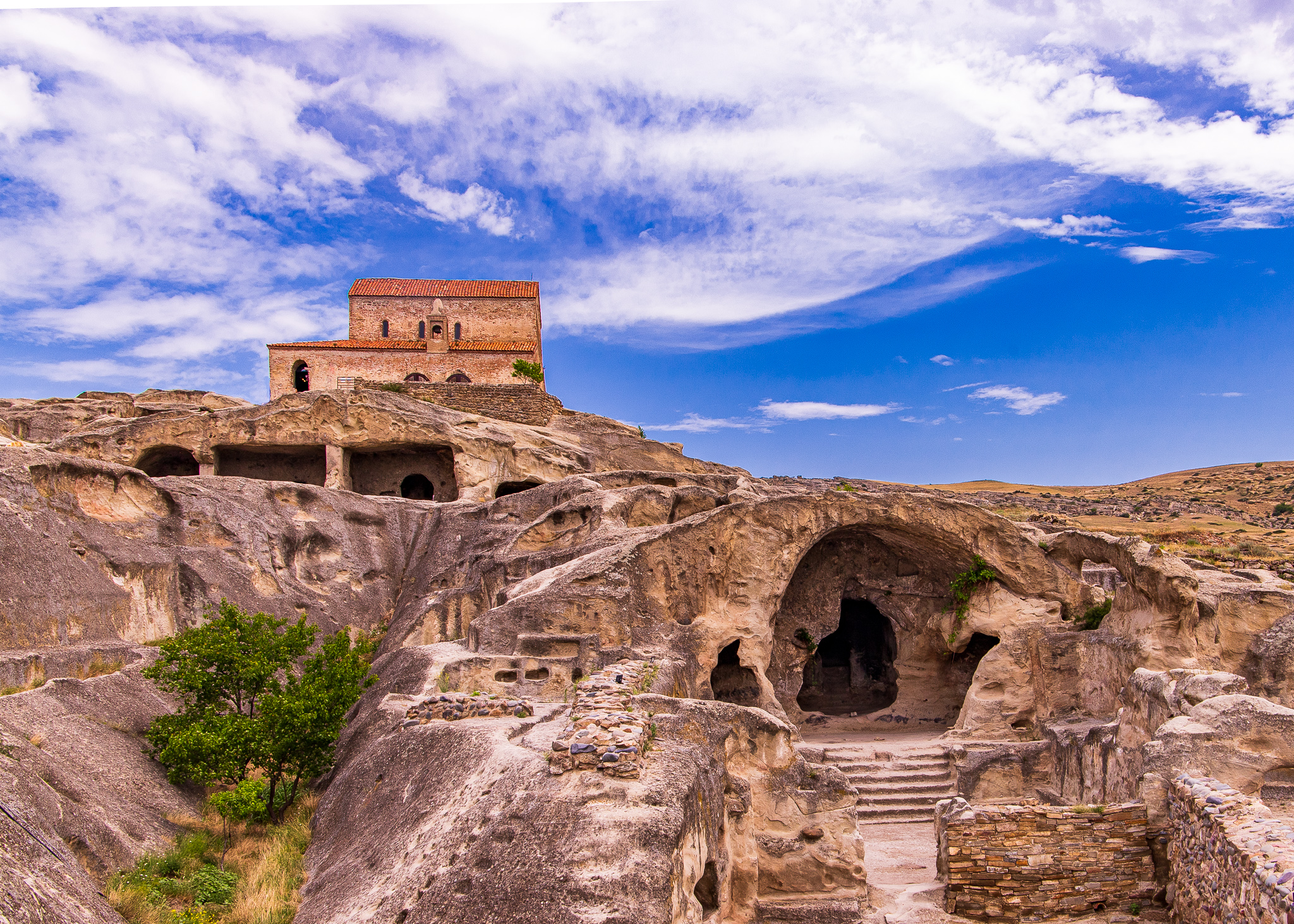About 15 kilometres to the east of Gori, cut deep into the surrounding natural rock, is the 12th century BC settlement of Uplistsikhe. One of, if not the, oldest urban settlements in Georgia, during its heyday between the 9th and 11th century AD, it is thought to have housed up to 20,000 people due to its strategic location along a main caravan road from Asia to Europe. The town lasted up until the Mongols invaded the country in the 14th century, after which it was virtually abandoned before being “rediscovered” in the 1950’s. It’s importance to Georgian culture is such that it was placed on the UNESCO Heritage Tentative List in 2007.
Looking up towards to the church
Walking around Uplistsikhe is a bit like being amongst the troglodyte rock houses and caves of Cappadocia in Turkey. Whilst most of the caves have no adornments, the size and age of the complex, along with the number of rooms and their well preserved state, makes for impressive viewing. Clearly identifiable pathways and tunnels connect the various structures which include halls, pagan places of sacrifice, apothecaries, bakeries, a prison, and a amphitheater.
The Great Hall
The pharmacy
The entire complex covers 8 hectares providing plenty of room in which to go exploring and wander around unimpeded. With entrance only 7 GEL for adults and 1 GEL for kids, you get a lot of rock for your buck. Their are audio sets available for 10 GEL which provide useful commentary on the numerous sites (I think there were at least 28 from memory) and as there is no real explanation on site, it is worthwhile purchasing this. It’s also worthwhile getting there early, when gates open at 10am, as it is a popular place to visit and best viewed without too many other people around.
The family checking out our potential new house
Presiding over the entire complex is a Christian basilica which was built in the 9th to 10th century AD. Called Uplistsulis Eklesia (simply meaning Uplistsulis Church), the church’s location seems to ensure that it sneaks into nearly ever photo!
Uplistsikhe Church
It wouldn’t be Georgia if there wasn’t some old Qvevri jugs lying around, even if they are right outside the church and these are perfect for staging photos opportunities.
The girls taking time out from their imaginary games to dutifully pose for photos
Uplistsikhe seems to have a long history of abandoning their towns. Looking down from the walls you can see the much more recently abandoned Uplistsikhe Village on the banks of the Mtkvari River. Set against the attractive backdrop of the surrounding countryside, it makes one wonder why people ever left in the first place.
The abandoned village down below the fortress
Uplistsikhe definitely surprised on the upside. We weren’t really expecting that much but the entire complex was way cool. It was big enough to not feel crowded, compact enough that walking in the heat wasn’t an issue and diverse enough so that you felt you weren’t constantly looking at the same thing. We spent an enthralling two hours, of which even the kids were interested for at least 30 minutes. Trust me, that means Uplistsikhe is very highly rated!
It’s not just Uplistsikhe that has wowed us, but Gori in general as well. However, our two days have now come to an end and it’s time to jump on the highway and head to Georgia’s 3rd largest city, Kutaisi.







